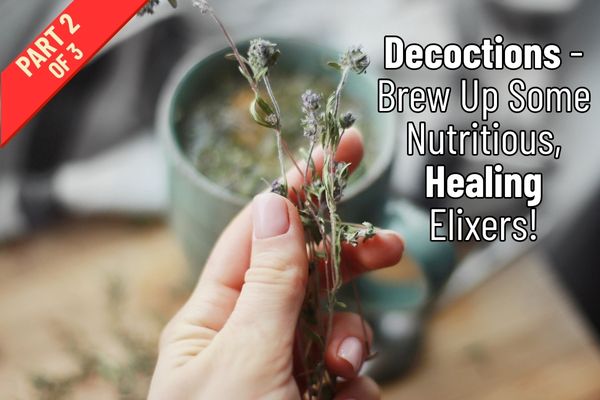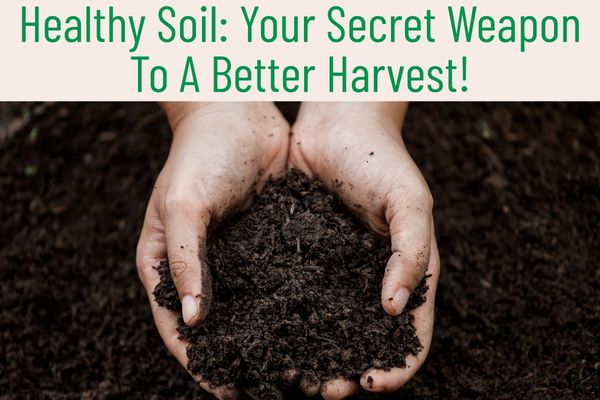Building on Part One, this article focuses on specific plant protocols, advanced preparation techniques, and practical applications for common prepper scenarios.
While Part One established basic methods and principles of infusion preparation, Part Two provides detailed instructions for prepping medicinal decoctions and addressing complex situations you’ll encounter in the wild.
Specific Plant Decoction Protocols
Willow Bark Decoction for Pain and Fever Relief
Willow bark contains salicin, a compound similar to aspirin’s active ingredient. Use inner bark from young branches, harvested during spring when sap flow is active. The bitter taste indicates proper salicin content.
For pain relief decoction, use two ounces of dried inner bark per quart of water. Cold-soak the bark for 4-6 hours before heating to improve extraction.
Bring to a boil, then simmer for 45 minutes to 1 hour until liquid reduces by half. The finished decoction should have a deep amber color and intensely bitter taste.
Standard dosage ranges from 2-4 tablespoons taken every 4-6 hours for adults. Start with smaller doses to assess individual tolerance, as some people experience stomach irritation similar to aspirin sensitivity.*
*Never give willow bark preparations to children under 16 due to Reye’s syndrome risk.
Echinacea Root Decoction for Immune Support
Echinacea purpurea and E. angustifolia roots provide the most potent immune-supporting compounds. Fresh root works best, but properly dried root remains effective for 12-18 months when stored correctly.
Use one ounce of fresh chopped root or half an ounce of dried root per pint of water. The root should produce a tingling sensation when chewed fresh. Simmer for 30-45 minutes until the liquid develops a golden-brown color and strong, earthy aroma.
Take 1/4 cup of the warm decoction three times daily at the first sign of illness. Continue for 7-10 days maximum, then discontinue for at least one week. Prolonged use may reduce effectiveness and potentially suppress immune function.
Burdock Root Decoction for Detoxification
Burdock root provides excellent liver support and general detoxification. Harvest first-year roots in late fall when they’re most concentrated with active compounds. Second-year roots become woody and less effective.
Scrub roots clean but don’t peel them, as many active compounds concentrate just under the surface. Use 1.5 ounces of fresh chopped root or one-ounce dried root per pint of water. Simmer for 60-90 minutes until the liquid becomes dark brown with a slightly sweet, earthy taste.
Take 1/3 cup three times daily before meals for general detoxification support. The decoction can be consumed warm or cold and keeps well refrigerated for up to one week.
Rose Hip Decoction for Vitamin C:
Rose hip provides exceptional vitamin C content when properly prepared. Use fully ripe but not overripe hips, removing seeds if desired to reduce grittiness in the final product.
Crush or chop two ounces of fresh rose hips per pint of water. Simmer gently for 20-30 minutes only, as prolonged heating destroys vitamin C. The finished decoction should be bright red with a tart, fruity flavor.
Consume 1/2 cup twice daily for vitamin C supplementation. This decoction provides additional bioflavonoids and nutrients not found in synthetic vitamin C supplements.
Combination Decoctions and Complex Formulas
Respiratory Support Formula
Combine equal parts pine needles, rose hips, and elderberries for comprehensive respiratory support during cold and flu season. Add these ingredients sequentially based on their extraction requirements.
Start with two tablespoons of dried elderberries and rose hips in two pints of water. Simmer for 15 minutes, then add two tablespoons of fresh pine needles and continue simmering for another 15 minutes. Strain while hot and add honey if desired.
This combination provides vitamin C, immune-supporting compounds, and respiratory-soothing properties. Take 1/3 cup warm decoction every 3-4 hours during acute respiratory illness.
Digestive Support Formula
Combine burdock root, dandelion root, and yellow dock root for comprehensive digestive and liver support. Use equal parts of each root, totaling 1.5 ounces of dried material per pint of water.
All three require similar extraction times, so they can be combined from the beginning. Simmer for 75-90 minutes until well-extracted. The finished decoction will be very dark and quite bitter.
Take 2-3 tablespoons before each meal to support digestion and liver function. This formula works particularly well for sluggish digestion and general detoxification support.
Advanced Preparation Techniques
Double Extraction Method
Some plants benefit from combining water and alcohol extraction to capture both water-soluble and alcohol-soluble compounds. Prepare your standard decoction first, then add high-proof alcohol to the cooled, strained liquid.
Use a 3:1 ratio of decoction to alcohol for most applications. Add 1/4 cup of 80-proof or higher alcohol to each cup of finished decoction. This creates a shelf-stable preparation that combines the benefits of both extraction methods.
Store double-extracted preparations in dark glass bottles. They maintain potency for 2-3 years when stored properly, making them excellent for long-term preparedness storage.
Concentrated Decoction Preparation
Creating concentrated decoctions extends storage life and reduces storage space requirements. After completing standard decoction preparation, continue gentle simmering until liquid reduces to one-quarter original volume.
Monitor carefully during final concentration stages to prevent scorching. The finished concentrate should have syrup-like consistency and intense flavor. One tablespoon of concentrate equals approximately 1/4 cup of regular-strength decoction.
Store concentrate in small glass containers, using only clean utensils for removal to prevent contamination. Properly prepared concentrates remain stable for several months without refrigeration.
Cold Percolation Enhancement
Some plants yield better extraction when subjected to extended cold water treatment before heating. This technique works particularly well with mucilaginous plants and some root materials.
Soak plant material in cold water for 12-24 hours before beginning the decoction process. This pre-soaking allows initial penetration and swelling of plant tissues, improving subsequent hot water extraction.
After cold soaking, proceed with normal decoction preparation using the same water. This method often produces stronger, more complete extractions than standard decoction alone.
External Applications and Topical Preparations
Wound Wash Decoctions
Strong antimicrobial decoctions serve as effective wound cleaning solutions when commercial antiseptics aren’t available. Calendula flowers, plantain leaves, and Oregon grape root all produce effective antiseptic decoctions.
Prepare decoctions at double normal strength for external use. Simmer plant materials until liquid reduces by two-thirds rather than half. Allow to cool completely before use on wounds.
Strain thoroughly to remove all plant particles that might contaminate wounds. Fresh preparations work best, but these decoctions can be stored refrigerated for up to one week if necessary.
Compress and Poultice Applications
Hot decoctions can be used directly for therapeutic compresses and poultices. Soak clean cloth in hot decoction and apply to affected areas for 15-20 minutes at a time.
For poultices, use the strained plant material mixed with small amounts of the hot liquid to create a paste-like consistency. Apply directly to skin and cover with clean cloth. These applications work well for inflammation, bruises, and minor skin conditions.
Always test temperature carefully to avoid burns and monitor skin reaction during application. Remove immediately if irritation develops.
Field Expedient Techniques
Minimal Equipment Methods
When operating with limited equipment, adapt decoction techniques to available resources. Large metal cups, canteen cups, or even clean tin cans can serve as decoction vessels for small batches.
Create makeshift strainers using clean cloth, bandanas, or even clean socks in emergency situations. Multiple straining through progressively finer materials produces acceptably clean results.
Control heat using fire management techniques rather than precise temperature control. Build fires with good coal beds for consistent, manageable heat rather than flames that provide uneven heating.
Water Conservation Techniques
In water-scarce situations, maximize extraction while minimizing water use. Use minimum water amounts that cover plant material completely during simmering.
Reuse decoction water by adding fresh plant material to already-used liquid for second extractions. While weaker than fresh preparations, these secondary decoctions still provide therapeutic value.
Consider using precious drinking water for strong medicinal decoctions only when therapeutic benefits outweigh water conservation needs. Plan water procurement accordingly when medicinal preparations become necessary.
Quality Control and Standardization
Establishing Consistent Strength
Developing decoction strength requires standardizing your preparation methods. Use the same ratios, timing, and equipment whenever possible to ensure reproducible results.
Keep detailed notes about plant sources, harvest times, preparation methods, and results. This information helps identify variables that affect final product quality and therapeutic effectiveness.
Test decoctions for consistency using sensory evaluation. Experienced practitioners can judge extraction completeness through color, taste, and aroma characteristics specific to each plant.
Potency Testing Methods
While lab testing isn’t available in most prep situations, practical potency assessment can guide preparation quality. Strong characteristic plant flavors usually indicate good extraction.
Compare color intensity between batches of the same plant material. Consistently weak coloration may indicate poor plant quality, inadequate extraction, or degraded source material.
Document therapeutic effectiveness through careful observation of results. Track which preparations produce desired effects, and which seem less effective, adjusting preparation methods accordingly.
Decoctions For Wellness And Healing
Mastering these specific plant preparations and advanced methods creates genuine therapeutic capability using only basic equipment and locally available plant materials.
The key to success lies in starting with simple, single-plant decoctions before progressing to complex formulas and advanced techniques. Build experience gradually while maintaining careful attention to safety considerations and realistic expectations about therapeutic outcomes.
When combined with proper plant identification skills, basic first aid knowledge, and understanding of when professional medical care is necessary, decoction provides a practical tool for maintaining health and treating common ailments regardless of external circumstances. Master these traditional skills to create lasting capability that serves both emergency preparedness and everyday wellness goals.
Important: Practicing herbal medicine involves significant medical risks, including potentially harmful side effects, dangerous interactions with conventional drugs, inconsistent product quality, and the possibility of incorrect diagnosis and delayed treatment. Because herbal products are not regulated as drugs, they are not subject to the same rigorous testing for safety and effectiveness. Essential skills and knowledge must be gained to effectively craft and administer herbal decoctions.




